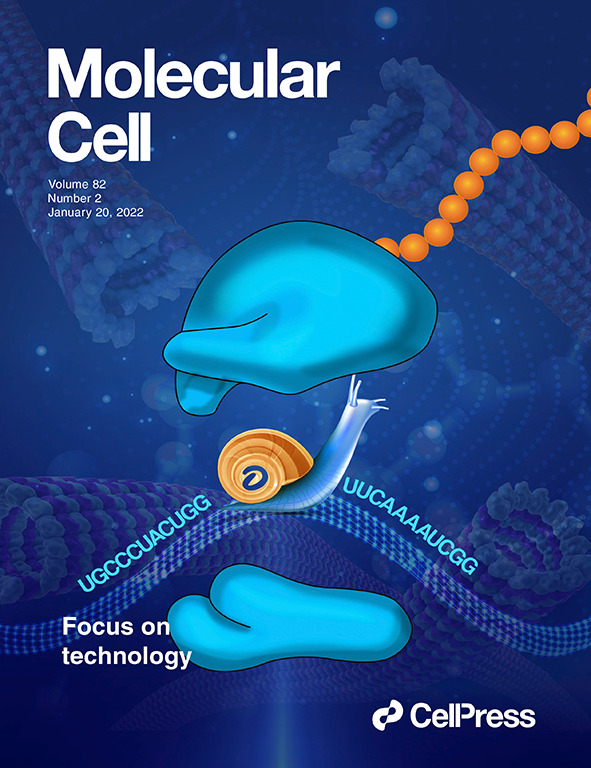C-TERMINAL DOMAIN PHOSPHATASE-LIKE 1 promotes flowering with TAF15b by repressing the floral repressor gene FLOWERING LOCUS C
IF 3.7
3区 生物学
Q2 BIOCHEMISTRY & MOLECULAR BIOLOGY
引用次数: 0
Abstract
Arabidopsis TATA-BINDING PROTEIN-ASSOCIATED FACTOR15b (TAF15b) is a plant-specific component of the transcription factor IID complex. TAF15b is involved in the autonomous pathway for flowering and represses the transcription of FLOWERING LOCUS C (FLC), a major floral repressor in Arabidopsis. While components of the autonomous flowering pathway have been extensively studied, scant attention has been directed toward elucidating the direct transcriptional regulators responsible for repressing FLC transcription. Here, we demonstrate that C-TERMINAL DOMAIN PHOSPHATASE-LIKE 1 (CPL1) is a physical and functional partner of TAF15b, playing a role in FLC repression. CPL1 is a protein phosphatase that dephosphorylates the C-terminal domain of RNA polymerase II (Pol II). Through the immunoprecipitation and mass spectrometry technique, we identified CPL1 as an interacting partner of TAF15b. Similar to taf15b, the cpl1 mutant showed a late-flowering phenotype caused by an increase in FLC levels. Additionally, the increase in cpl1 was correlated with the enrichment of phosphorylated Pol II in the FLC chromatin, as expected. We also discovered that CPL1 and TAF15b share additional common target genes through transcriptome analysis. These results suggest that TAF15b and CPL1 cooperatively repress transcription through the dephosphorylation of Pol II, especially at the FLC locus.
C-TERMINAL DOMAIN PHOSPHATASE-LIKE 1 通过抑制花抑制基因 FLOWERING LOCUS C,与 TAF15b 一起促进开花。
拟南芥 TBP-ASSOCIATED FACTOR15b(TAF15b)是转录因子 IID(TFIID)复合体的植物特异性成分。TAF15b 参与了自主开花途径,并抑制拟南芥中主要花抑制因子 FLOWERING LOCUS C(FLC)的转录。虽然对自主开花途径的成分进行了广泛的研究,但很少有人注意到负责抑制 FLC 转录的直接转录调节因子。在这里,我们证明了 C-TERMINAL DOMAIN PHOSPHATASE-LIKE 1(CPL1)是 TAF15b 的物理和功能伙伴,在 FLC 抑制中发挥作用。CPL1 是一种蛋白磷酸酶,能使 RNA 聚合酶 II(Pol II)的 C 端结构域(CTD)去磷酸化。通过免疫沉淀和质谱技术,我们发现 CPL1 是 TAF15b 的相互作用伙伴。与 taf15b 相似,cpl1 突变体也表现出因 FLC 水平增加而导致的晚花表型。此外,正如预期的那样,cpl1的增加与FLC染色质中磷酸化Pol II的富集相关。通过转录组分析,我们还发现 CPL1 和 TAF15b 有更多共同的靶基因。这些结果表明,TAF15b 和 CPL1 通过去磷酸化 Pol II 合作抑制转录,尤其是在 FLC 基因座上。
本文章由计算机程序翻译,如有差异,请以英文原文为准。
求助全文
约1分钟内获得全文
求助全文
来源期刊

Molecules and Cells
生物-生化与分子生物学
CiteScore
6.60
自引率
10.50%
发文量
83
审稿时长
2.3 months
期刊介绍:
Molecules and Cells is an international on-line open-access journal devoted to the advancement and dissemination of fundamental knowledge in molecular and cellular biology. It was launched in 1990 and ISO abbreviation is "Mol. Cells". Reports on a broad range of topics of general interest to molecular and cell biologists are published. It is published on the last day of each month by the Korean Society for Molecular and Cellular Biology.
 求助内容:
求助内容: 应助结果提醒方式:
应助结果提醒方式:


